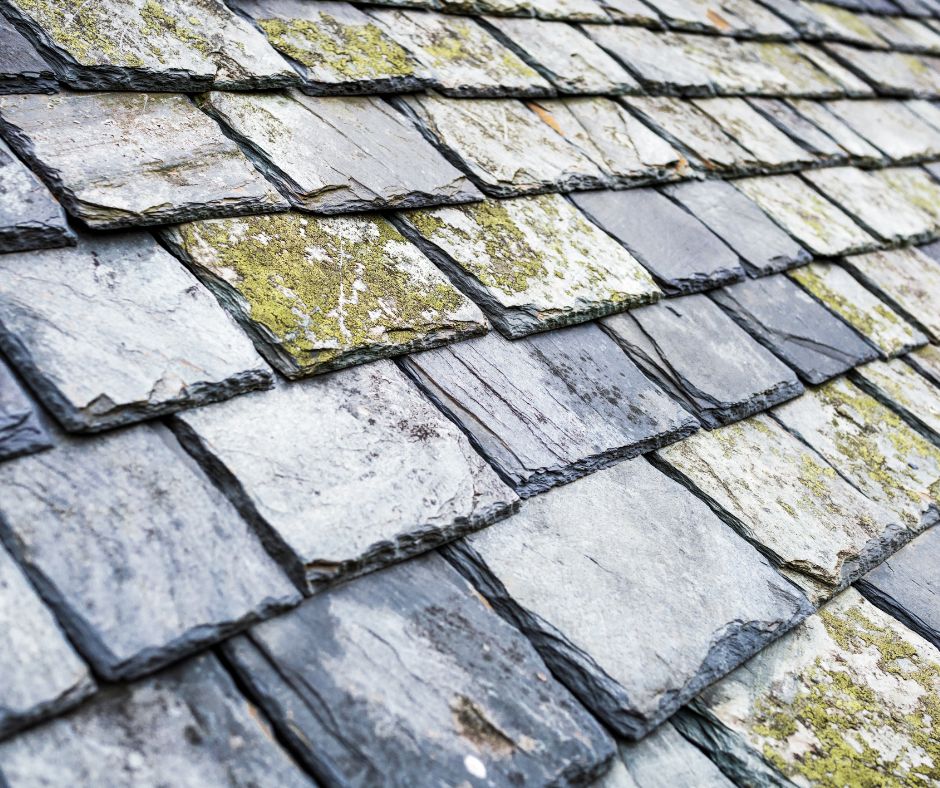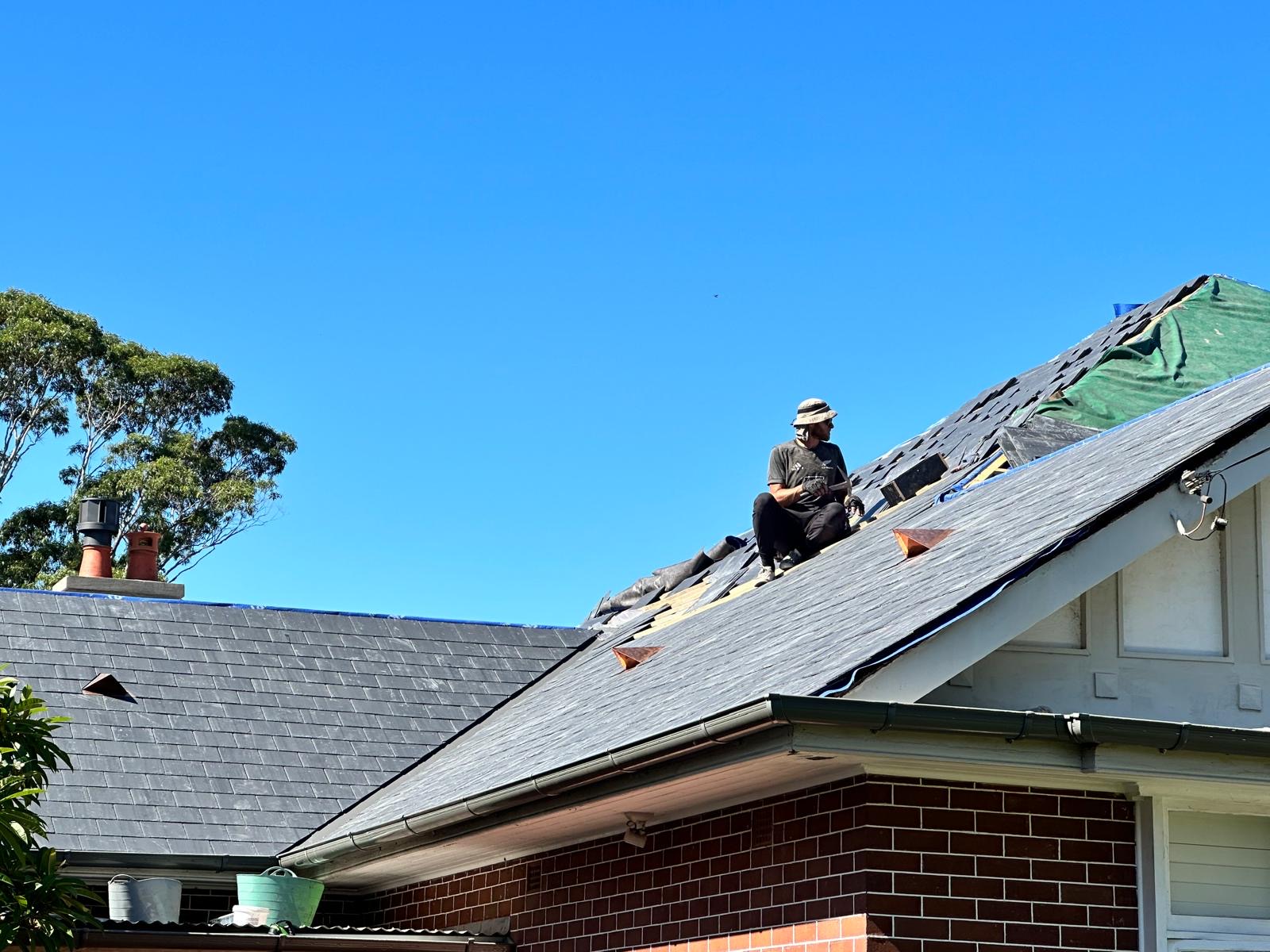Quickly Identify the Key Indicators of Slate Roof Damage
If you observe issues such as slipped or broken tiles, noticeable water stains on ceilings, damaged flashing, cracked ridge mortar, or an accumulation of slate debris in your gutters, your slate roof may require immediate attention. Other concerning signs include visible sagging, unexpected leaks following rainfall, or indications of water damage around chimneys and roof valleys. To prevent potentially expensive structural damage and to safeguard your roof investment, it is crucial to schedule regular roof inspections. Detecting these issues early can save you from costly repairs in the future and ensure the longevity of your roofing system.

Understand the Consequences of Water Damage from a Leaking Roof
Many homeowners remain unaware of issues with their slate roofs until they notice unsightly water stains appearing on ceilings or water marks on walls. While slate roofs are renowned for their remarkable durability and extended lifespan, they are not immune to the effects of time. Key components such as nails can rust, flashing may lift, and one or two tiles might shift enough to permit water infiltration. Surprisingly, a persistent small leak can result in considerable damage, often exacerbated by gradual wear rather than a single major storm event, leading to more extensive issues over time.
Recognising early warning signs of roof damage is critical to avoiding a significantly larger repair bill later. Below, we outline essential indicators that suggest your slate roof requires professional assessment and repair to maintain its integrity and functionality.
1. Identifying Water Marks on Ceilings as Critical Indicators of Damage
The presence of a yellow-brown ring on your ceiling is more than just an unsightly stain; it serves as a significant warning signal. Water can travel through internal structures for several metres before finally dripping onto a ceiling surface. By the time you detect it, the leak has often been ongoing for a considerable period. Typically, water infiltrates at roof joins or near gutter installations, with marks often emerging in cornice areas, close to chimneys, or beneath roof valleys. It’s essential to take ceiling stains seriously as they may indicate underlying issues.
2. Recognising Shifting or Uneven Slate Tiles as a Major Red Flag
Slate tiles are installed in tight rows, and if even one tile begins to shift or dip, it often signals that the underlying nail has failed. If multiple tiles exhibit this issue, it may indicate that the battens or underlay have been compromised. While a few loose tiles can often be easily repaired, a larger area of displaced tiles is a sign that your roof requires immediate attention to prevent further damage and potential water infiltration.
3. Finding Slate Fragments in Gutters or on the Ground as a Clear Warning Sign
If you discover fragments of slate scattered in your gutters or, worse, on the ground after wind or rain, this typically indicates that the tiles are cracking or crumbling. Such deterioration may arise due to age, impact, or loose fixings. This issue serves as one of the earliest signs that your roof warrants inspection and potential repairs, even if it appears visually acceptable from the street. Ignoring this early warning could lead to more severe problems down the line.
4. Assessing Warped, Lifted, or Rusted Flashings for Potential Water Entry Points
Lead flashing is specifically designed to protect critical joints around chimneys, skylights, and roof valleys. However, if the flashing becomes cracked, lifted, or starts to corrode, it creates an entry point for water. While this damage may be challenging to spot from the ground, it often becomes evident from the rooftop. If your roof is over 20 years old and the flashing hasn’t been replaced during that time, it may be wise to consider an upgrade to prevent further complications and water ingress.
5. Addressing Cracked Mortar Along the Ridge or Gables Before Major Issues Arise
Cracked or loose ridge capping is a common concern among older roofs. Natural elements such as rain, wind, and sun gradually erode the mortar over time. If this issue goes unaddressed, it can result in water seeping beneath the tiles, leading to more significant problems. Generally, this concern can be resolved with a simple repair instead of necessitating a complete re-roofing, provided it is identified early enough.
6. Listening for Unusual Ticking or Dripping Sounds After Heavy Rain as a Key Warning Sign
This may seem odd, but one of the initial signs of a leaking slate roof is the distinct sounds it produces. If you hear ticking, dripping, or the sound of water trickling down inside walls following a storm, this should raise immediate alarm bells. It suggests that water is moving behind the scenes, signalling the urgent need for professional intervention before the next rainfall exacerbates the situation further.
7. Evaluating Recent Roofing Work for Potential Damage to Slate Roofs
It is more common than you might realise to encounter issues following recent roofing work. Scaffolding from other trades, solar panel installations, or gutter repairs can inadvertently damage slate tiles. Even walking across a slate roof without proper knowledge of foot placement can lead to cracking or dislodging tiles. If you’ve noticed changes after any roofing work has been completed, it is prudent to arrange an inspection to ensure the integrity of your roof remains intact.

Proactively Protect Your Investment: Schedule Your Roof Inspection Today
If any of these indicators resonate with you, the next crucial step is to arrange a comprehensive inspection. A qualified roofer with substantial expertise in slate roofing can effectively discern between normal wear and issues that necessitate urgent repair to maintain the roof's integrity.
A thorough inspection encompasses more than just a cursory assessment; it requires evaluating the condition of the battens, sarking, flashing, and the roof’s ventilation systems. In some instances, a few tiles might need to be replaced, while other situations may call for extensive repairs. The key is to be proactive and identify potential problems before water damage has the chance to escalate and cause further harm to your home.
Contact us today for a complimentary roofing quote and take the essential first step in protecting your home from potential damage and ensuring your roof remains safe and sound.
The Article: Slate Roof Repair: Signs You Need to Act Now first appeared on https://writebuff.com
The Article Slate Roof Repair: Urgent Signs You Shouldn’t Ignore Was Found On https://limitsofstrategy.com


This is such an important topic that often gets overlooked! I’ve personally seen friends grapple with the unexpected fallout of a leaky roof, and the stress it can cause is palpable. Just the other month, a colleague dealt with extensive water damage after a seemingly minor issue turned into a major repair job. It really highlights how critical it is to stay proactive with roof maintenance.